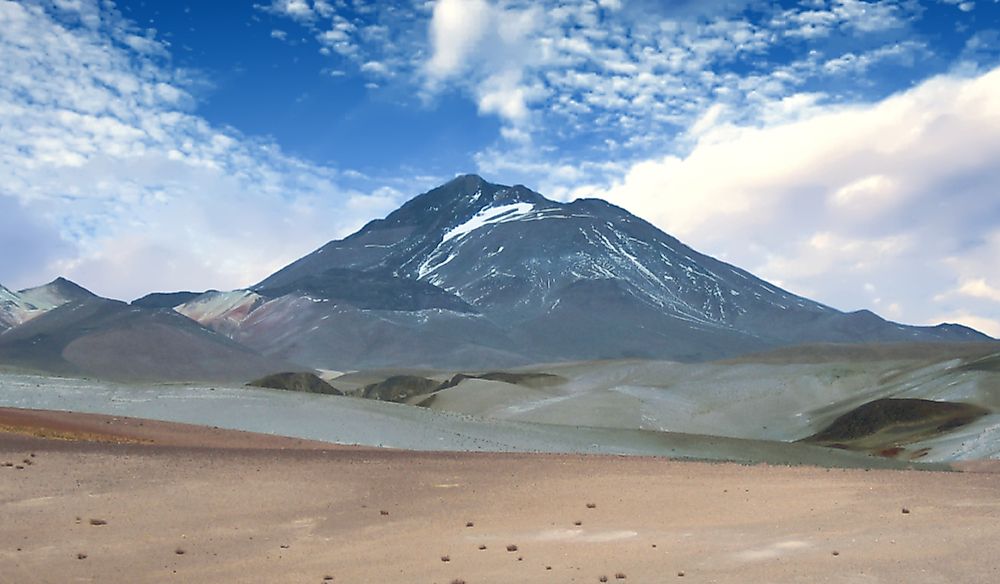Where Is The World's Highest Archeological Site?

The world’s highest archaeological site, Mount Llullaillaco, is located on the border of Argentina and Chile. Although dormant, this South American stratovolcano ranks as the second largest active volcano on Earth behind Ojos del Salado. In terms of elevation, Mount Llullaillaco rises to a staggering height of approximately 22,109 feet. Featuring rocks which date back one and a half million years ago, this geologic structure was formed from volcanic igneous rock lava flows which occurred during two separate phases of in the Earth’s history; the Pleistocene (also known as the Ice Age) and the Holocene (or current) epoch.
Archaeological Discoveries
Although the ancient Incas were known to have climbed Mount Llullaillaco, the first 20th-century ascent of the towering mountain was recorded in 1950. It was not until 1999, however, that the site’s true archaeological importance came to light. It was during an expedition led by explorer Johan Reinhard that a team of scientists discovered the mummified bodies of three children approximately six to fifteen years of age old at the summit of the mountain. The remains, thought to be Incan sacrifices, were buried about five feet down under a sizeable platform. All three were clad in elaborate ceremonial headdresses and buried with a collection of some 145 objects including feathers, pottery, textiles, and statues made from gold and silver.
Children of Llullaillaco
The three mummified bodies, consisting of two girls and a boy, came to be known as the Children of Llullaillaco. It is believed that the bodies were Incan human sacrifices who had arrived at their ultimate resting place sometime around the year 1500. Researchers familiar with ancient Incan practices believe that the three children were administered drugs (thought to be a potent mix of alcohol and cocaine) before freezing in the frigid temperatures of the sacred space, and then had their bodies carried away and buried under the mountain platform.
Ancient Incan Rituals
Human sacrifices, specifically the ritual known as Capacochaere, were performed by the Incas as a means of appeasing the gods who they believed resided in the high mountain peaks. Children were selected because they were thought to represent the ideal in humanity and be without sin. Once the ritual was completed, the Incans believed that these young sacrifices would serve as guardians for the local communities spread out below the mountain.
Present Day
As of 2001, the Children of Llullaillaco were declared to be the historic property of the nation of Argentina. In 2007, the three mummies were put on display at the Museum of High Altitude Archaeology (or Museo de Arqueología de Alta Montaña de Salta) in the city of Salta. Much effort has been put into preserving the physical remains. They are kept in a climate controlled enclosure which is set at the same temperature as their previous mountain top burial place.
The area in which the remains of the three children were found is thought to be home to an additional 40 or so similar burial places. Due to concerns by local indigenous peoples in the Andes region, however, there are no plans to remove any other mummies from the historic site.











